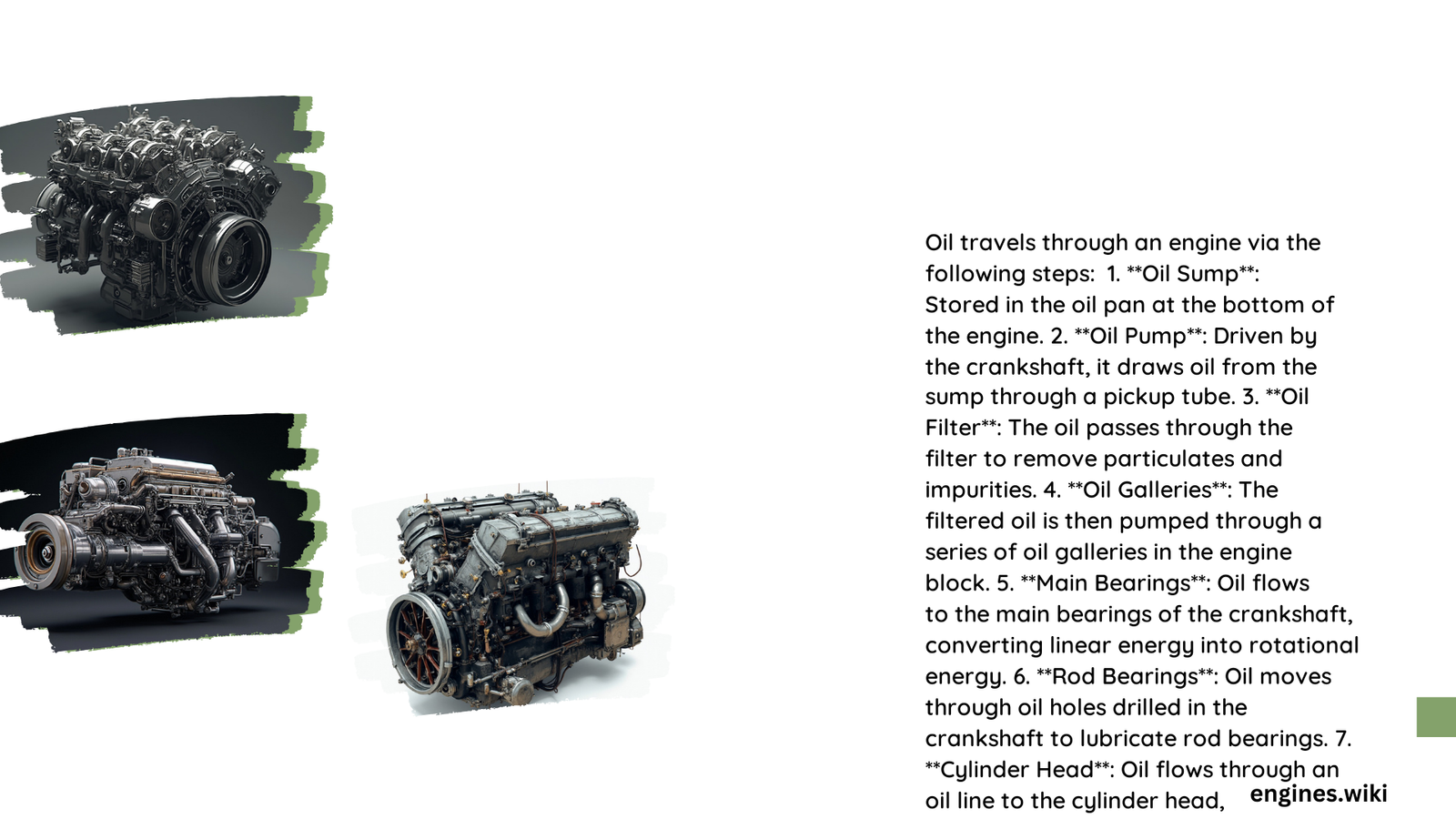Engine oil is the lifeblood of any internal combustion engine, performing a complex journey through intricate pathways to protect, cool, and maintain critical mechanical components. Its circulation involves precise pressure dynamics, filtering mechanisms, and strategic distribution channels that ensure every moving part receives optimal lubrication, preventing friction, reducing wear, and maintaining overall engine health.
What Triggers Oil Movement in an Engine?
How Does Oil Begin Its Journey?
The oil circulation process starts in the oil sump, a reservoir located at the engine’s bottom. Here’s a detailed breakdown of its movement:
Oil Pump Mechanics
- Primary Driver: Crankshaft-driven oil pump
- Pump Types:
- Gear pumps
- Jerotor pumps
- Pressure Generation: 30-70 PSI typical range
| Pump Component | Function |
|---|---|
| Pickup Tube | Draws oil from sump |
| Strainer | Removes large contaminants |
| Filter | Eliminates microscopic particles |
What Path Does Oil Follow Through Engine Components?
Crankshaft and Bearing Lubrication
Oil travels through precisely engineered galleries, creating a microscopic film between moving parts. The process involves:
- Main Bearing Lubrication
- Oil pressurized to 0.001-inch thickness
- Prevents direct metal-to-metal contact
-
Reduces friction and wear
-
Connecting Rod Journals
- Receives oil through internal crankshaft channels
- Sprays lubricant onto cylinder walls
- Ensures continuous protective layer
How Does Oil Reach Camshaft and Valve Train?
Oil flows through cylinder block and head galleries, lubricating:
– Camshaft journals
– Valve stems
– Tappets
– Timing chain components
What Influences Oil’s Performance?
Temperature and Viscosity Dynamics
- Cold Startup: Higher viscosity (thicker oil)
- Operating Temperature: 100-120°C
- Multi-Grade Oils: Contain viscosity-index improvers
Why Are Oil Additives Critical?
Specialized additives enhance oil’s performance:
– Detergents: Remove contaminants
– Dispersants: Prevent particle accumulation
– Viscosity Improvers: Maintain consistent flow
How Does Oil Return to Sump?
After completing its lubrication cycle, oil returns to the sump by gravity, ready to restart its protective journey.
Key Takeaways

- Oil circulation is a precision-engineered process
- Multiple components work together for optimal lubrication
- Regular maintenance ensures consistent performance
Technical Specifications
- Average Oil Flow: 10-20 liters per minute
- Typical Operating Pressure: 40-60 PSI
- Temperature Range: -20°C to 150°C
Maintenance Tips
- Regular oil changes
- Use manufacturer-recommended oil grades
- Monitor oil pressure and quality
- Replace oil filters consistently
Reference:
– Society of Automotive Engineers Lubrication Guide
– Automotive Lubrication Technical Papers
– Engine Oil Circulation Mechanics
